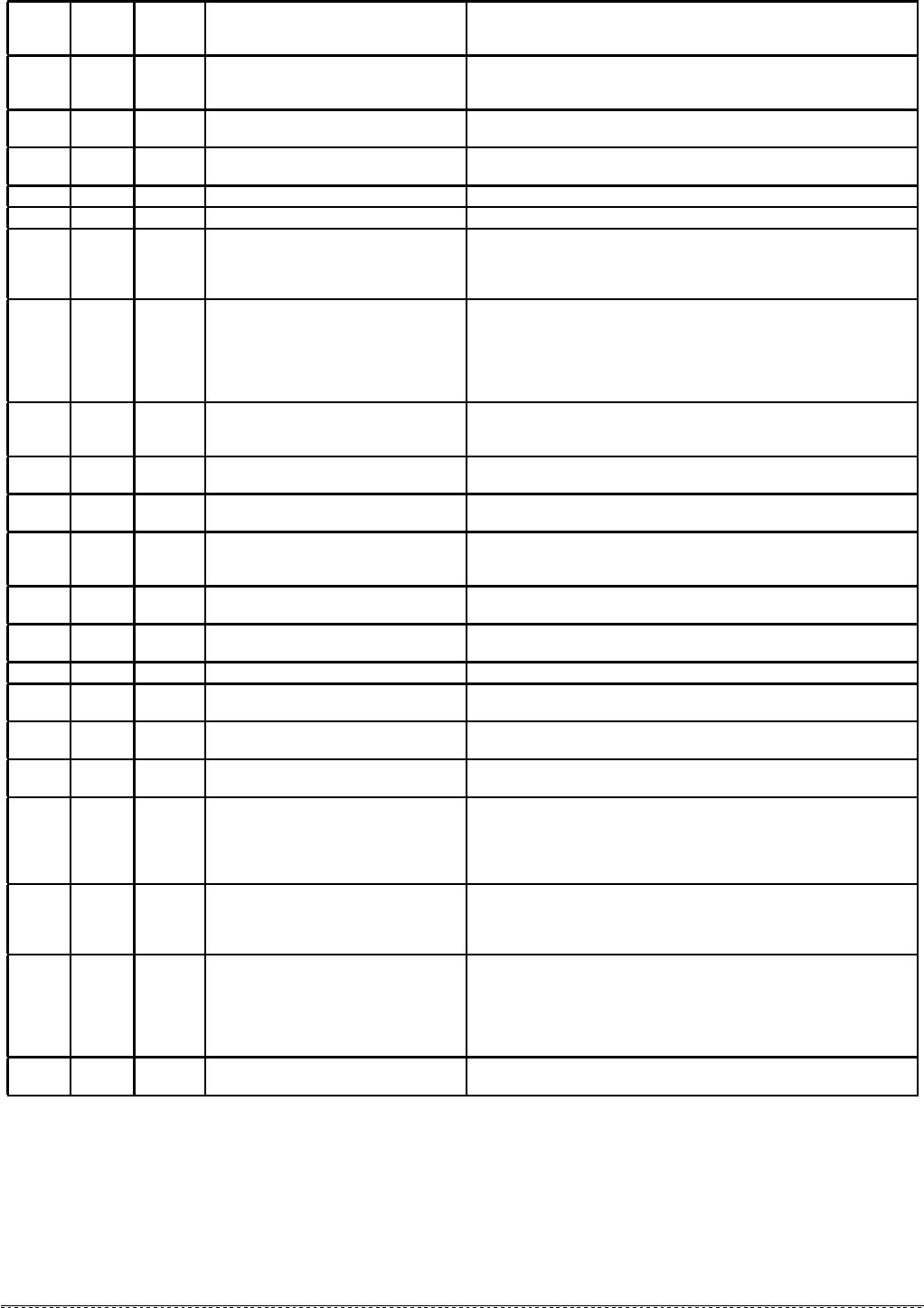Installation Guide

36
I&O manual
Table 16- Troubleshooting Chart
1 Integrated control module will automatically attempt to reset from lockout after one hour.
2 LED Flash code will cease if power to the control module is interrupted through the disconnect or door switch.
Green
LED
Flash
Amber
LED
Flash
Red LED
Flash
Error/Condition Comments/Troubleshooting
1 Flame sensed when no flame should
be present
Verify the gas valve is operating and shutting down properly. Flame
in burner assemble should extinguish promptly at the end of the
cycle. Check orifices and gas pressure.
2 Pressure switch stuck closed/ inducer
error
Pressure switch stuck closed. Check switch function, verify inducer
is turning off.
3 1st-stage pressure switch stuck open/
inducer error
Check pressure switch function and tubing. Verify inducer is turning
on the pulling sufficient vacuum to engage switch.
4 Open limit switch Verify continuity through rollout switch circuit.
5 Open rollout/open fuse detect Verify continuity through rollout switch circuit, check fuse.
6 1st-stage pressure switch cycle
lockout one call for heat from the thermostat the control will lockout. Check
if the first stage pressure switch cycles 5 times (open, closed) during
pressure switch for fluttering, inconsistent closure or poor vacuum
pressure.
7 External lockout (retries) Failure to sense flame is often caused by carbon deposits on the
flame sensor, a disconnected or shorted flame sensor lead or a
poorly grounded furnace. Carbon deposits can be cleaned with
emery cloth. Verify sensor is not contacting the burner and is located
in a good position to sense flame. Check sensor lead for shorting
and verify furnace is grounded properly.
8 External lockout (ignition recycles
exceeded where flame is established
and then lost)
Check items for exceeded retries listed above and verify valve is not
dropping out allowing flame to be established and then lost.
9 Grounding or Reversed polarity Verify the control and furnace are properly grounded. Check and
reverse polarity (primary) if incorrect.
10 Module gas valve contacts energized
with no call for heat
Verify valve is not receiving voltage from a short. If a valve wiring is
correct and condition persists, replace module.
11 Limit switch open – possible blower
failure overheating limit
Possible blower failure, restricted air flow through appliance or
duct work. Verify continuity through limit switch circuit and correct
overheating cause.
12 Module Ignitor contact failure Fault code indicates the module ignitor contacts are not functioning
properly. Replace module.
Solid Module - internal fault condition Module contacts for gas valve not operating or processor fault.
Reset control. if condition persists replace module.
Rapid Twinning error Check wire connections. If condition persists, replace module.
3 double 2nd-stage Pressure Switch Stuck
Open/Inducer Error
Check pressure switch function and tubing. Verify inducer is turning
on and pulling sufficient vacuum to engage switch.
1 Normal Operation with call for first
stage heat
Normal operation - first stage
2 Normal Operation with call for second
stage heat
Normal operation - first stage
3 W2 present with no W1 Second stage call for heat on thermostat circuit with no call for first
stage. Verify dip switches are set for two stage thermostat and check
thermostat first stage circuit. Configured for a multi-stage thermostat
the Module will not initiate heating unless first stage call from
thermostat is received.
4 Y present with no G call Module will allow cooling to operate with only a "Y signal from
the thermostat but will also trigger this code. Verify thermostat is
energizing both "Y" and "G" on call for cool. Check "G" terminal
connections.
Rapid Low flame sense current Low flame sense current is often caused by carbon deposits on
the flame sensor, a poorly grounded furnace or a mis-aligned
flame sense probe. Carbon deposits can be cleaned with emery
cloth. Check for improve furnace and module ground. Verify sensor
is located in or very near flame as specified by the appliance
manufacturer.
1 Standby or Call for Cool Normal operation. Waiting for call from thermostat or receiving
thermostat call for cool.










